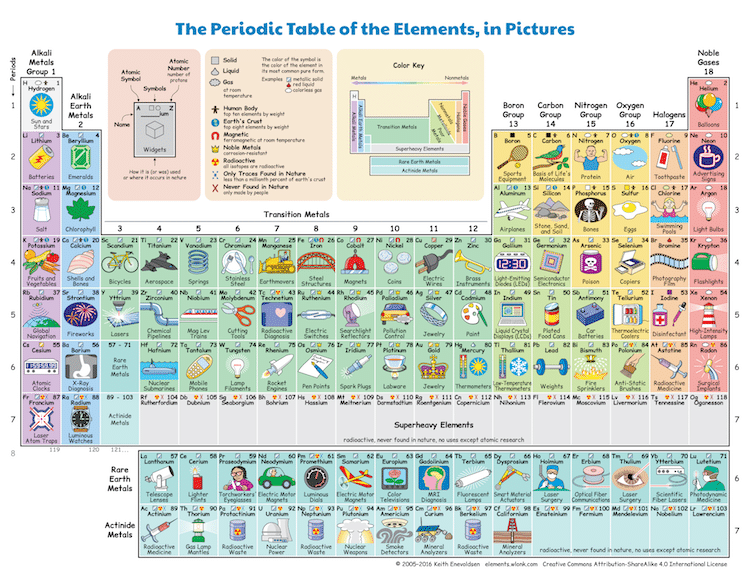
Anyone who ever sat through a high school chemistry class knows how frustrating it can be to tackle the periodic table. Created to give an order to chemical elements according to their atomic number, chemical properties, and electron configurations, the scheme has been in use since the mid-1800s. And now, the table has gotten an update to demonstrate how these elements apply to our daily lives.
Boeing software engineer Keith Enevoldsen created The Periodic Tables of Elements, in Pictures and Words to help break down the barrier between chemistry and everyday life. Don’t understand why bromine or indium is useful? You’ll find bromine in photo film, and indium is used to create LCD screen. Through simple pictures and direct descriptions, Enevoldsen reminds us of why these chemicals are useful. Never heard of europium? With a quick glance, you’ll learn that this soft metal is responsible for helping us watch color TV.
All under the Creative Commons license, the periodic table, both with and without the written words, is available in a high-resolution printable version. The individual element cards, which come with easy instructions on how to print make great study tools or you can even order the tables as high-quality posters.
Enevoldsen continually updates the table, adding Nihonium, Moscovium, Tennessine, and Oganesson when they were officially named the International Union of Pure and Applied Chemistry in 2016.
The Periodic Table of Elements, in Pictures and Words breaks down chemical elements by their everyday uses and is available in myriad printed formats.
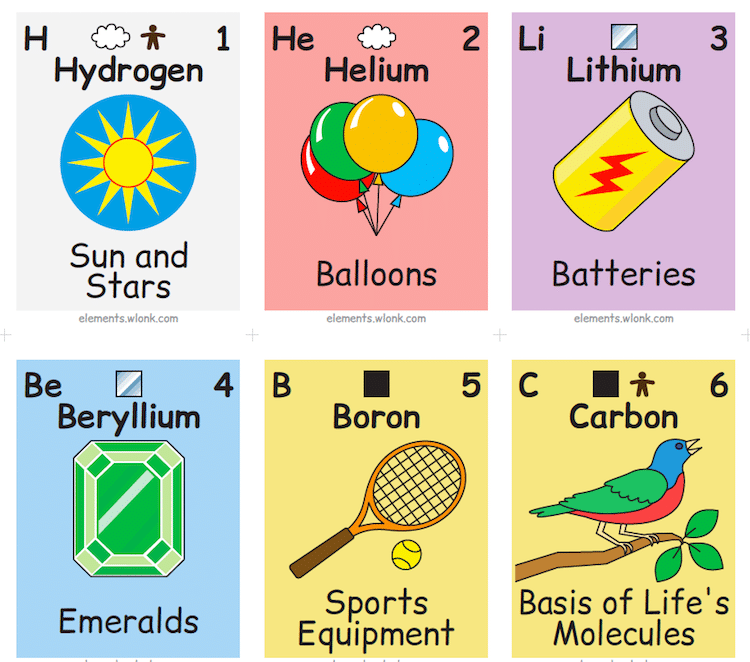
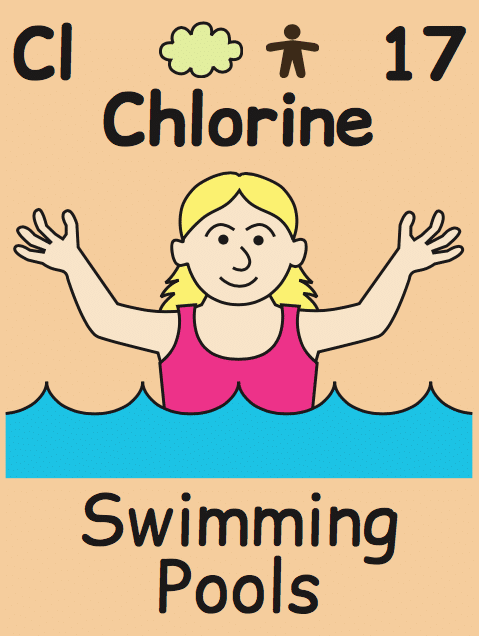
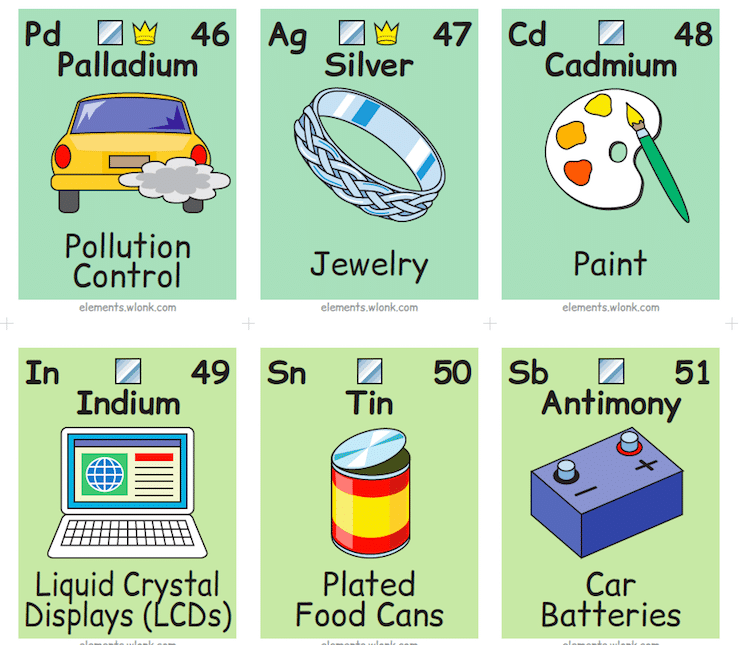
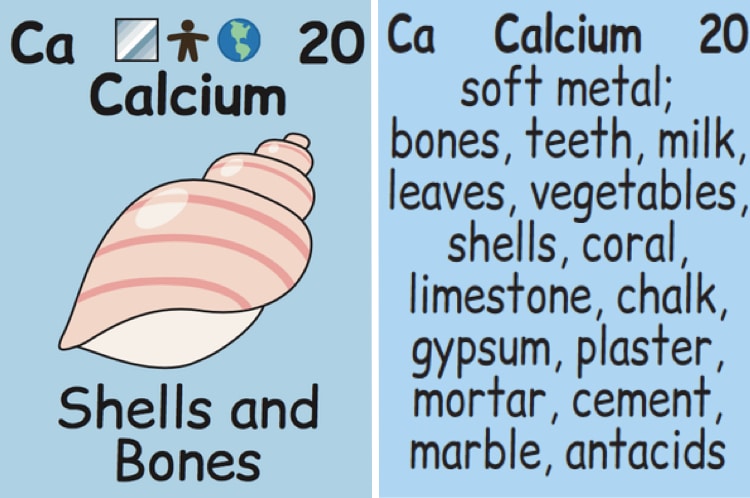 Periodic Tables of Elements in Pictures and Words: Website
Periodic Tables of Elements in Pictures and Words: Website
h/t: [Mental Floss]
All images via Keith Enevoldsen / CC BY-SA 4.0.
Related Articles:
Clever “Element” Crayons Help Kids Learn the Periodic Table as They Color
Breaking Bad Characters as Chemical Diagrams
First New Blue Pigment in Over 200 Years is Being Made into a Crayon
Radioactive Elements Coasters Emit an Electric Glow When You Set Your Drink on Them
